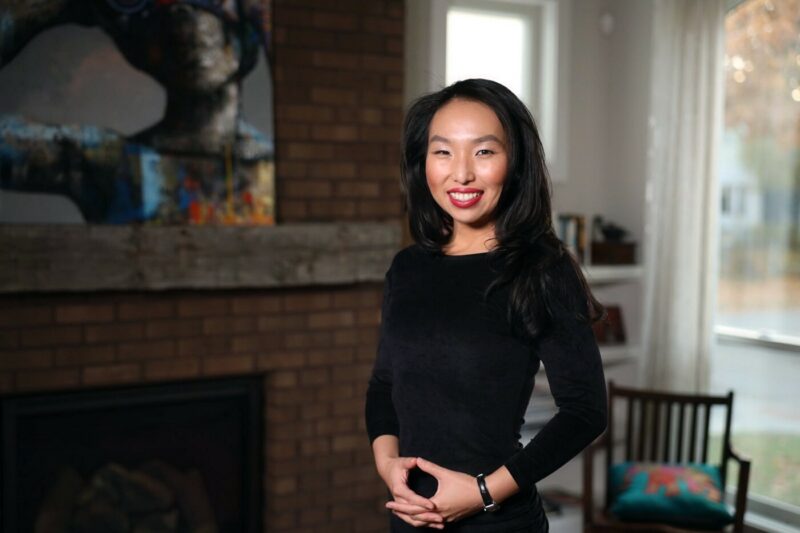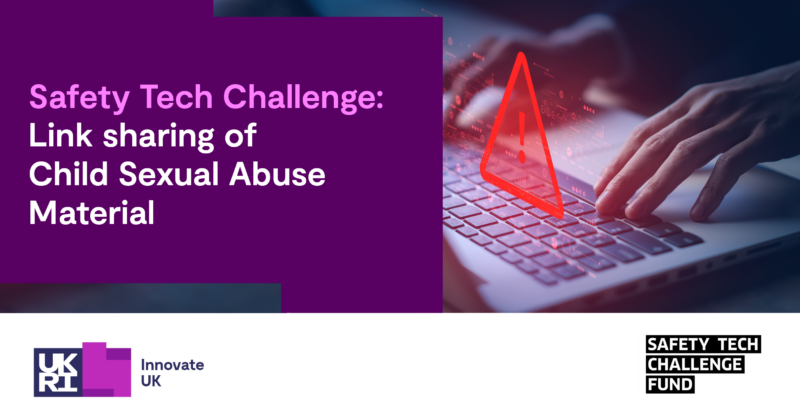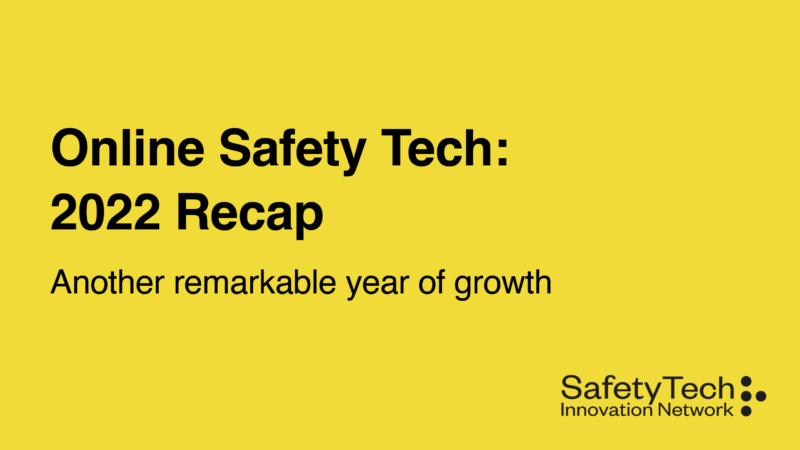Safety Tech Spotlight with…Tiffany Xingyu Wang, Oasis Consortium
In our first spotlight interview, we speak with Tiffany Xingyu Wang from Oasis Consortium, who discusses the concept of digital sustainability, data dignity and the newly published User Safety Standards.

The Oasis Consortium is a think tank that works with businesses to accelerate the development of a better, more sustainable internet. Members include Trust & Safety experts from industry, academia, non-profits, government agencies, and more.
Tiffany Xingyu, you co-founded the Oasis Consortium. Can you share a bit more about the Consortium?
I co-founded the Oasis Consortium in 2020 with the goal of defining and building trust in web3. Our mission is to advance digital sustainability through ethical standards and technologies.
We developed the digital sustainability framework based on three pillars that are critical to rebuilding trust in web3: Safety by Design in the forthcoming metaverse; Privacy by Design in the rise of the Internet of Things; and Inclusion by Design in the AI-powered semantic web.
I believe that trust is the new digital transformation. Companies that adopt digital sustainability will thrive in web3 with a competitive edge of trust.
We love the concept of Digital Sustainability for web3. Can you share with us some of your background that brought you here?
I was previously an energy investor across Asia, Africa, and Europe. On the journey of bringing billions of dollars into award-winning energy projects, I focused on evangelising, investing in, and building a sustainable world. As I reflect on those efforts, it took decades of petitioning for civil society, governments, and businesses to acknowledge and address the global emergency of climate change. Due to the delay, we are left with much to repair and little time.
Online toxicity, privacy violations, and AI biases are the carbon footprint in the digital world. Lack of ethical practices in safety, privacy, and inclusion makes our digital environment vulnerable to erosion.
As we build and migrate into web3, I see an opportunity to avoid the delays we saw with the climate crisis. We can avert that fate. My goal is to make digital sustainability the de-facto for web3, and do it with haste.
Oasis Consortium recently published its User Safety Standards, intended as guidelines for companies to sustain a better, more ethical, digital future. This is a really exciting step forward. Could you tell us a bit more about the Standards?
Yes. We first focused on the Safety pillar. The Oasis User Safety Standards launched on Jan 6, 2022, on the Capitol Insurrection’s one-year anniversary.
Lack of safety guardrails in web2 led us to the onslaught of online toxicity including hate speech and violence. With lessons learnt, we have to put down safety guardrails at the get-go of web3. The metaverse, a key component of web3, could accelerate the velocity and increase the impact of any disruptive behaviour given its attributes of persistence, immersiveness, interoperability and fantasies. It is imperative to make available an actionable set of user safety standards, here and now.
We collected best practices across online platforms, compared for consistencies and gaps, and distilled them into the standards. By and large, the industry was looking for a playbook – practical guidelines on how to increase user safety. So we focused on creating something actionable and specific, which teams can use to quickly jumpstart or accurately benchmark their efforts to create a safe user experience. You can easily access the standards on our website.
We launched the standards, along with a dozen pioneers committed to the standards and pledging to work toward a safer and more inclusive web3, including Agora, dentsu, Fandom, Grindr, Pandora/Sirius XM, Roblox, The Meet Group, Wildlife Studios, and Wisdom. We will reveal more platforms that joined the pledge in the coming months.
What has been your biggest challenge while drafting the Oasis User Safety Standards with the Consortium?
I knew from the outset that “one size doesn’t fit all” for user safety practices. There are a variety of needs and expectations of users dependent on the platform. That is why we convened a Safety Advisory Board, representing diverse views from gaming, dating, social media, live-streaming platforms, brand agencies, and governments. This enabled us to host conversations and voice concerns to create a set of generalised, yet adoptable standards that can be tailored for platforms across different industries and company stages without losing brand identity.
What were the interesting learnings in launching the standards?
When we met with the leaders who run user safety programs across different digital platforms, we had two types of reactions:
First, they liked that they now had something to take to their exec team to show that the idea of Trust & Safety is an industry operating with best practices, versus a company-by-company approach. This is akin to something like DevOps or Product Management that has its own set of operating principles across industries and companies.
Second, while they may not do something perfectly yet, they can learn from others in the space and are watching what others do. The industry is doing this in fragmented ways — all Oasis is doing is bringing us together and standardising the process.
I am inspired by the amazing effort of all the stewards for good (trust and safety professionals & collaborators) we have worked with to build a safer and more equitable future.
Why are you supportive of the Safety Tech Innovation Network and Safety Tech?
The prosperity of clean technologies fueled the green economy in the physical world. It diversified energy sources and enabled new approaches for sustainability. Digital sustainability, in a similar way, requires a growing community of ethical technology companies addressing safety, privacy and inclusion.
The Safety Tech Innovation Network plays a critical role in promoting safety tech innovations, while Oasis drives governance and advocacy. Together, we can make the vision of digital sustainability come to fruition sooner. That’s why I am very excited about our collaborations.
How are you leading the way in building a safer web outside of Oasis?
Governance, education and innovation! The work of the Oasis Consortium focuses on the governance portion of my work.
I also saw a surging and unmet demand for trust and safety leaders. Yet, the role is largely undefined and the knowledge is fragmented. Therefore, I partnered with Linkedin to launch the first-of-its-kind course “Become a Trust & Safety Leader”.
The goal is to make Trust & Safety knowledge more accessible for everyone and to enable a new wave in the workforce. I saw over two thousand learners taking the course within a month. The demand signals this fast-rising profession of stewards for good.
To drive digital safety innovation, I serve as Chief Strategy and Marketing Officer at Spectrum Labs, a leading AI-based content moderation platform keeping billions of users safe online. One exciting project I am currently focused on is to launch one of the first-ever brand and user safety conferences, Safety Matters Summit. The Summit aims to architect a more equitable and safer metaverse, and orchestrate leading voices from the sector.


